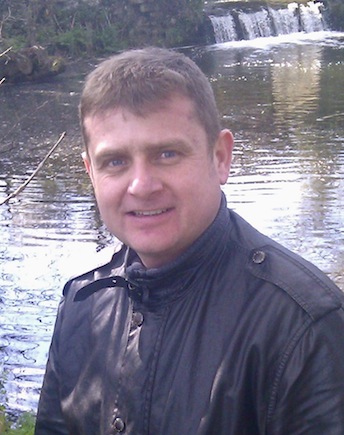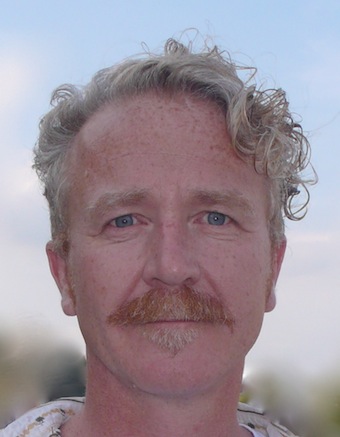Art and mental health
By Kerry Hudson
Many characteristics of mental health match that of creative thinking - flights of ideas, speeding up  of thoughts, heightened perception of visual, auditory and somatic stimuli, powerful emotions and lacking inhibition - potentially pushing bold and original creative outcomes. It is therefore no wonder that some amazing work has been produced by artists worldwide during lapses of mental health.
of thoughts, heightened perception of visual, auditory and somatic stimuli, powerful emotions and lacking inhibition - potentially pushing bold and original creative outcomes. It is therefore no wonder that some amazing work has been produced by artists worldwide during lapses of mental health.
Sculptress Yayoi Kusama's work is still created in the psychiatric institution where she has lived since 1977, exhibiting at major galleries worldwide. Painter William Kurelek also created his masterpiece from his hospital ward. Other artists well associated with mental health are writers Hans Christian Anderson, Sylvia Plath and musicians Ian Curtis and Syd Barrett.
So have we found a positive outlet for sufferers of mental health? Should access to art be written into care plans alongside talking therapies and medication?
Gary Malloy, artist with Bipolar Affective Disorder
Gary has been section free in the twelve years he's been practicing art on a daily basis. He has also been able to come off his primary medication and requires minimum psychiatric consultation. He is an artist member of Core Arts, an arts and mental health service in East London.

"I believe, I would still be a revolving door psychiatric patient, if I hadn't found Core arts and began my journey as an Artist. I would probably be lost and disillusionment would have set in. Expressing myself as an Artist, keeps me grounded, content, and most of all determined to be a catalyst for change, encouraging, inspiring and helping others through my Art and story of recovery" Gary told us.
"There's something about the artistic atmosphere. Since being at Core Arts, I've found the supportive and highly creative atmosphere, boosts my well-being."My mental health could, like anyone else, suffer in the future but it's empowering to know I'll always have my creativity to fall back on, because that's not going anywhere."
Stephen Malloy, Gary's brother and carer, has watched his brother go into the depths of physical restraint behind lock and key, and bounce back up again.
"Painting saved my brother" Stephen tells me."I saw the transition, from being in a clinical environment where he had been sectioned and sedated, to being in a colourful room where he was allowed to express himself.
"Access to create art has given my brother a healthy motivation - when people get depressed they often lack this - and focus. The concentration involved in painting takes his mind away from past and future thinking and holds him in the now."Stephen's is most grateful that this service was available to his brother, as twelve years ago they were much harder to come by, even more so in smaller towns.
"We have an uncle living in a small town in Ireland. Like both my brother and our Mother he's diagnosed with bipolar affective disorder, and there were no services available other than his GP. His mental health, unlike Gary's deteriorated."Paul Monks, founder of Core Arts
In 1992, artist Paul Monks set up an art studio in a partly disused hospital in Hackney. Psychiatric wards were the only wards still in use in the building and patients would often wander into Paul's studio, pick up a brush and start to paint.
Paul has witnessed some astounding art being created here by it's members, even during periods of poor mental health and dark states of distress.
Paul says: "Our artist members come here to step away from what consumes them outside. What we do here is like the opposite to therapy, we don't try and get to the bottom of it but zone into something completely different."The classes give our members the creative tools which build their confidence as artists, and the service allows the social aspect, be it developing friendships or artistic opportunities."
An artist himself Paul reflects on his own creative outlet which right now is gardening. In fact, all the staff at Core Arts are trained artists that are experienced in mental health. Some of these began as members, then became volunteers, and progressed to staff members, even management. This means that should they become unwell they don't have to face the terrifying presumed prejudice of mainstream staff environments.Creative therapy
Creative therapy can be useful in many aspects of mental health; from helping those who have gone through trauma, grief, or abuse find a way to express painful emotions, to helping those suffering more severe disorders.
As a textiles artist I can vouch for Paul, Stephen and Gary. The whirring of my sewing machine and the repetition of knitting patterns takes me to a temporary place in my head where nothing else can get in. Engaging in arts based activities gives an alternative structure, something many of us suffering from mental ill health aren't always capable of maintaining; the childlike feel of being covered in paint, sheet music layered across the floor... the “organised chaos”. Don't get me wrong, the therapy is very much still in the diary, we just need a positive, pleasurable and enjoyable focus in the meantime.
Find out more about Core Arts
To find out more about Gary Maolloy and his work visit http://garymalloy.blogspot.co.uk





